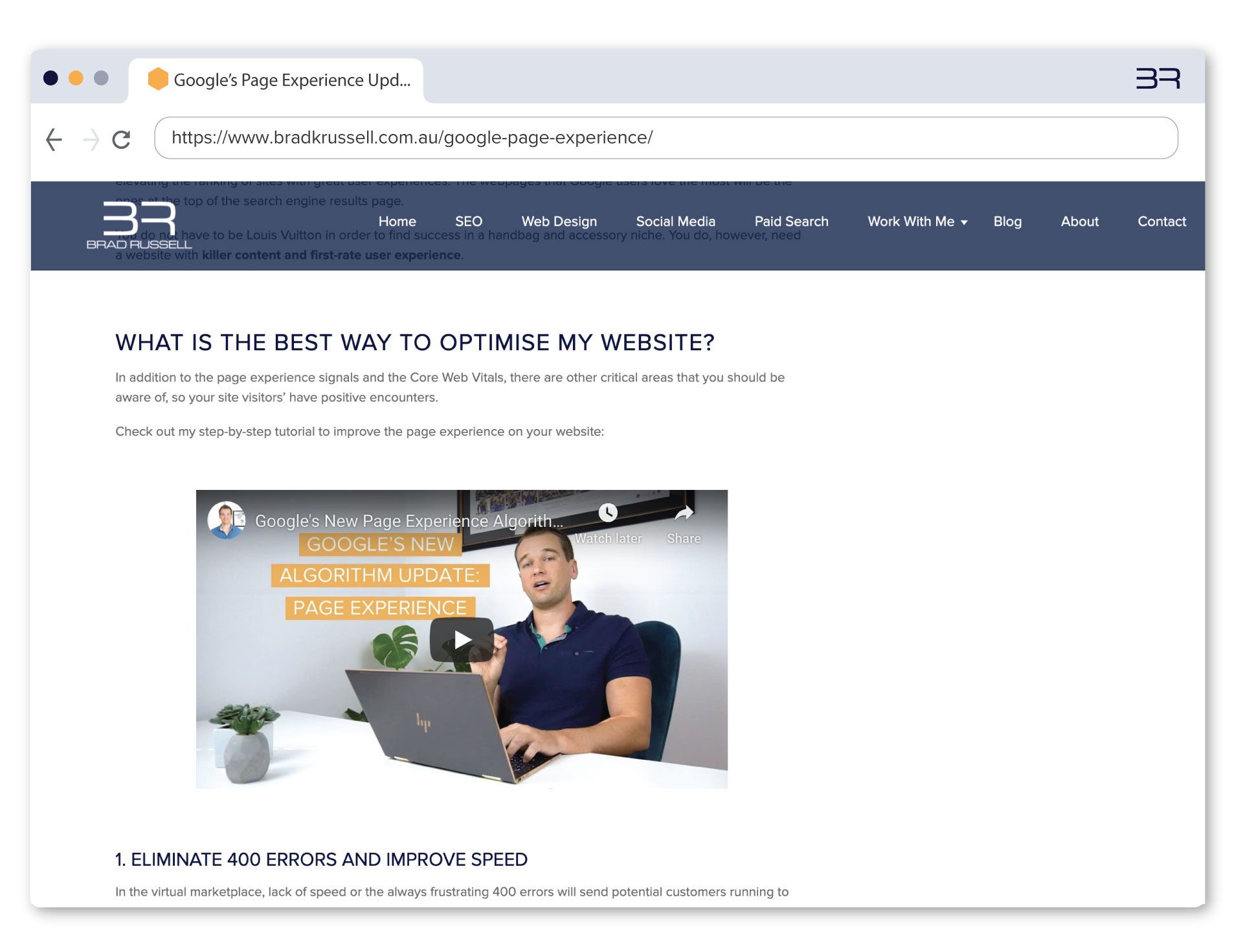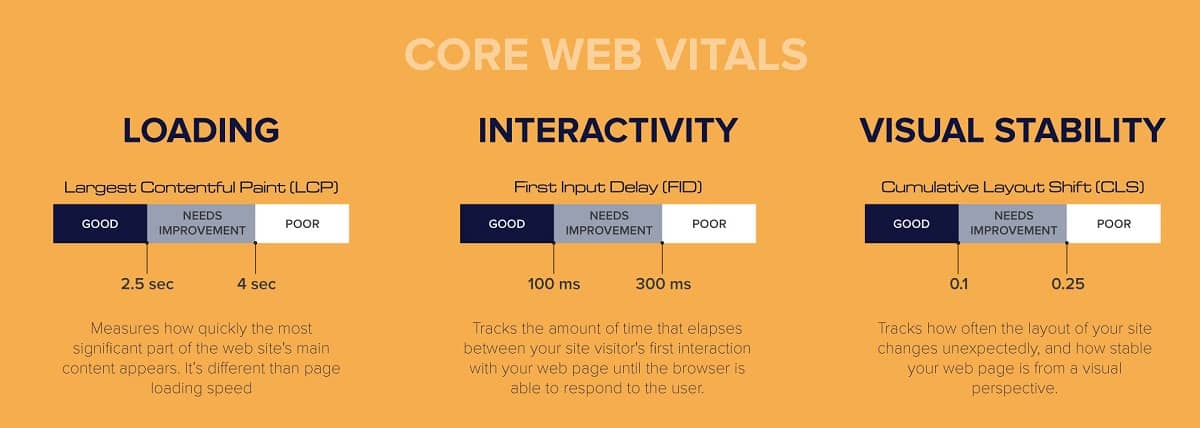7 SEO Trends in 2021: What You Must Know to Thrive

SEO is ever evolving. The strategies that lead to increased Google rankings a year ago won’t necessarily work in the future. As such, it’s crucial you stay on top of the latest trends.
In this post, I’ll outline the top seven trends that you will see in SEO in 2021, and provide suggestions to help you leverage these so you can improve your organic search traffic.
The Top 2021 SEO Trends
1. Local Search
It is nearly impossible to overstate the necessity of your presence in local search queries. The dominance of searching nearby will continue to grow in 2021. Of course, placing great importance on local search is not new. However, immediacy and convenience are presently driving the local search market, and the statistics show why you need to be prepping for this trend:
- 150% growth in searches that include the words “__ near me now.”
- 200% growth in searches with the words “open + near me + now.” The phrase points to the many changes seen in the business world since the pandemic. Not only do your customers want to learn if you are still in the area, but they also want to know when you are accessible.
- 900% growth in searches using the words “___ near me today” as well as “__ near me tonight” The today/tonight concept fine-tunes the “open+ near me+ now” idea
Remember: While these may seem like very minute details to you, your customers find this essential. Make sure the hours of operation you list are actually the hours of operation someone is available to connect with a customer. It became common to see phrases like “hours of operation may vary” at the height of business interruptions as COVID-19 ravaged the globe. However, a customer looking for a meal or a bouquet of flowers is not interested in learning about places that might meet their needs.
For this reason, dedicate a few minutes on a regular basis to updating your hours of operation. Even if you are not available when a customer wants your goods, you will avoid angering someone who thought you would be open for business when they needed you.
2. Expansion of Video Use
You’ll be be aware that video makes up a significant portion of the Internet. Presently, YouTube has more than one billion users, and these numbers grow consistently. According to Cisco’s Whitepaper on the subject, 82% of online activity will be video traffic by 2022. Additionally, HubSpot tells us that 43% of people want more video content.
How Can I Provide Quality Video Content to My Site Visitors?
It is paramount that your video is of the highest calibre. Additionally, you want the information you share to be useful to viewers and in an SEO optimised format. While this sounds like a tall order, it is manageable when divided into sections.
Make Your Content as Useful as Possible
- Featured Snippet Videos – Google went to the heart of the matter with its report “Reintroduction to Featured Snippets.” The search engine giant put a spotlight on the idea of videos as featured snippets.
- Divide Your Content Into Sections – Neatly segmented content helps Google understand what information you share on your videos. Additionally, content that is easy to understand is more likely to become material in a featured snippet.
- Optimise Your Video for SEO – There are several factors that can make or break your video including, keyword in the title, video optimisation and promotion, as well as demonstrating channel authority.
- Give Google a Transcript – While Google generally does a good job creating their transcripts, there are times when a detailed account of what is in the video makes understanding much easier.
Grow Your YouTube Channel
When you consider that YouTube is the world’s second-largest search engine, as well as the fact that Google owns YouTube, you can see the sensibility that comes with making content with YouTube in mind. Around 55% of Google Searches have at least one video in them.
Remember: A large number of marketers are NOT making videos. While their reasons may differ, you still benefit from your competitor’s lack of action.
Embed Video Content in a Text-based Blog Post
If consumers want video, then, by all means, give them an opportunity to see your video. Experts say that embedded videos help to lower bounce rate as well.

Adding videos to your website will improve your SEO results and reduce bounce rate.
3. Refined Visual Search Capabilities
Technological advances are continually improving the concept of visual search. If you are not convinced, consider these facts:
- Google Lens is able to identify well over one billion objects
- The social media and sharing app, Pinterest, gets more than 600 million visual searches each month
- Google Lens has been used over one billion times
- According to Market Watch, 62% of consumers under the age of 35 want more visual search technology
- As good as visual search is right now, it will continue to get better as tech evolves
How Can I Improve My SEO Using Images?
If you already have images as an integral part of your webpage, you are on the right track. Here are some helpful tips to make sure your pictures are up to par:
- High-quality, relevant images are essential
- Customise the name of the image to be sure it is pertinent to your topic
- Use alt tags
- Add images to your site map to help web crawlers
- Ensure that your site is mobile-friendly. Mobile-first indexing is Google’s mantra, and they have a helpful way to test your site’s mobile-friendliness.
- Do not skimp on quality content on your pages. The highest-ranking sites generally feature 1,600+ words of relevant content.
4. Create Content That Is Featured Snippet Friendly
Given their place above the first-place result on Google’s search results, featured snippets are highly useful for gaining the attention of searchers. Sometimes called result number zero, featured snippets are a large factor in gaining attention, as well as traffic to your website.
How Can I Get My Content to Be Used as a Featured Snippet?
Here are a few suggestions to have the best chance of getting your content displayed as a featured snippet:
- Look for Opportunities for Your Content to Be a Featured Snippet – This is a matter of finding the keywords you rank for and those with a featured snippet. Many businesses do well to focus on words they rank for among organic keywords. Nearly 100% of featured snippets come from websites that already rank on the first page of the SERPs.
- Create Snippet Ready Content – Sometimes known as ‘Snippet Bait’ a box with between 40 to 60 words of content helps get your information as a featured snippet. Writing small blocks of data or definitions can go a long way to push your content into the featured snippet section.
- Consider Using Other Kinds of Featured Snippet Formating – Consider bulleted list snippets or table snippets to make your content stand out.
5. Domain Authority (Also Known as E-A-T)
Establishing yourself as an authority in your niche is a critical factor and one of the biggest SEO trends in 2021. Google is taking this idea a step further by implementing what is known as the E-A-T score. E-A-T stands for three critical factors that Google looks at when crawling your site. These are:
Expertise
Does your site’s content come from sources with legitimate knowledge of the topic at hand? The notion of capability is difficult to fake, and it might be worth your time to consult with professionals in the areas you are covering. A base of working knowledge is crucial if your site offers health, financial, or medical advice.
Authoritativeness
Regardless of your website’s topic, it is vital to establish yourself as an authority in the niche. It is not enough for you to share your opinions on investments, or tell your readers what you think about the best dog breeds for families with children. If you do not have legitimate mastery of a topic, enlist someone with authority to create content for you.
Trustworthiness
The idea of trustworthiness covers the validity of your content as well as the security of your website. Some key factors that impact a web page’s trustworthiness include:
- A privacy policy that is easy to locate and understand
- An ‘about us’ page detailing how you have come to be a part of your businesses’ niche
- A contact page that is responsive and easy to find
- Bylines for the authors of your articles and blog posts
- External links and reference information
6. Prepare for Google’s Core Web Vitals to Influence Your Ranking
Presently, Google’s Core Web Vitals (a vital part of the Page Experience update) will begin to influence web page rankings in May 2021.
The logic behind the update is that Google is looking to reward websites that give visitors the best experience possible. The lead time Google has provided allows businesses time to plan and prepare sites for the upcoming algorithm update.
What Factors Will Google Consider When Examining Core Web Vitals?
Several factors will be the focus of Google’s upcoming changes. The Core Web Vitals are:
- Loading (Largest Contentful Part) – The LCP measures how quickly the web page’s main content loads. The ideal amount of time is 2.5 seconds or less.
- Interactivity (First Input Delay) – Your FID score relates to the time it takes for a page to become interactive. The goal is for interactivity to begin within 100 ms.
- Visual Stability (Cumulative Layout Shift) – A site’s CLS is a measurement of page stability. The target is less than 0.1.
Remember: You can check the Core Web Vitals of your page by heading to Google Search Console and clicking on the Core Web Vitals tab.

Core Web Vitals are the foundation for Google’s upcoming changes in 2021.
7. Search Intent Matching Is Critical
Technology continues to evolve and improve at a break-neck pace. These consistent developments make Google more efficient when determining the searcher’s intent.
Google’s growing precision is easy to understand, especially when you factor in predictive search, keywords that are semantically related, and strides in the use of artificial intelligence. To maintain (or improve) your rankings you will want to do all you can to conquer search intent.
How Can I Figure Out Search Intent?
Sometimes, identifying a keyword’s search intent is simple. The keyword itself will point you to the intent. More frequently, you will need to look through the search results to key in on what searchers are needing.
For example, let’s say you sell nutritional supplements. One of your keywords is ‘melatonin’. To learn a searcher’s intent when entering ‘melatonin’ in a search query, look at the top results. Are you noticing information about where to buy melatonin? Perhaps, what you discover is the results (and therefore the most typical intent) is information about melatonin, its use, and its safety. After discovering the intent, you can tailor your posts to match.
Vital Points to Consider
- Importance of Data and Analytics – As long as you are in business, you will need to stay on top of data to help you understand your customers, spot SEO trends, and create top-notch campaigns. Also, analytics keep you informed about the crawling of URLs, indexing, errors, redirects and more.
- Long-form Content Is Still Important to Your SERPs Ranking – Although there are many times you should streamline your content, do not make the mistake of eliminating long-form content. Here’s why:
- Pages that are 3,000 words or longer get 3.5 more backlinks than those with 900-1,200 words
- A reader will share an article of approximately 3,000 words four times more often than shorter pieces
- A 3,000-word article gets three times more traffic than an article in the 900-1,200-word range.
- Ways to Help Your Click-through Rates – A common thread throughout the online marketplace is the decline of organic click-through rates. Google’s ads, carousels, and answer boxes compete on the SERPs, and frequently results go unnoticed. To help your CTRs, try one or more of the following:
- Add your keyword in your URL
- Create titles with a touch of emotion
- Write meta descriptions for your pages
- Be Aware of the Google Passage Ranking – An estimated 7% of all searches will feel the impact of the new feature. The Passage technology allows Google to rank specific portions (or passages) of a page apart from the collective work. To maintain your standing, consider dividing your content into smaller sections and be sure to keep up with the long-form content to cover topics thoroughly.
Taking Advantage of These Trends
There is no getting around the fact that SEO is evolving and growing more complex. These actionable tips will help, however you may lack the time or the necessary staff to implement them.
If this is the case, you may want to consider getting in touch with me. I work with a handful of clients each month, and have a proven track record of success.


